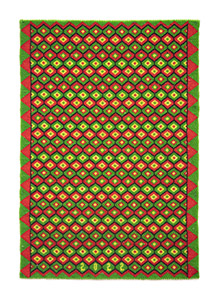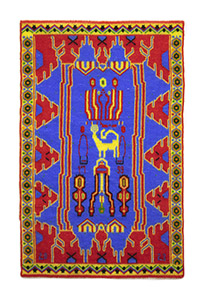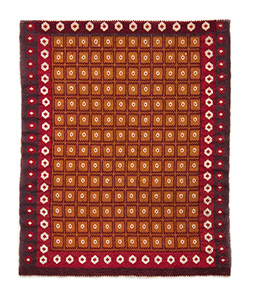Bead Ryas
Bead Ryas
Beading, 2023
When Kamanger first saw the Finnish ryas, he immediately remarked that they were similar to their Persian carpets. These beaded ryas are his interpretations of ryas from the Emil Cedercreutz Museum's collection consisting of peasant rugs from Satakunta district, collected by Emil Cedercreutz at the turn of the 19th and 20th centuries.
The similarities between Nordic ryas and oriental carpets have long puzzled scholars. Both types of textiles feature pile weaving and decorative patterns. The most common type of knot used is the Smyrna knot, which called rya knot in Finland.
Recent research traces the origins of ryas back to Mesopotamia and Egypt. It suggests that the same manufacturing technique was used for both blankets and carpets. The blankets were woven to be flexible at the bottom and to fit the sleeper. For carpets, a sturdy, flexible base was needed. In this way, textiles from the same source were differentiated from each other. Ryas and oriental carpets seem to share a distant 'ancestor', which has been transformed over time to meet the needs of local cultures in terms of use and fashion.



